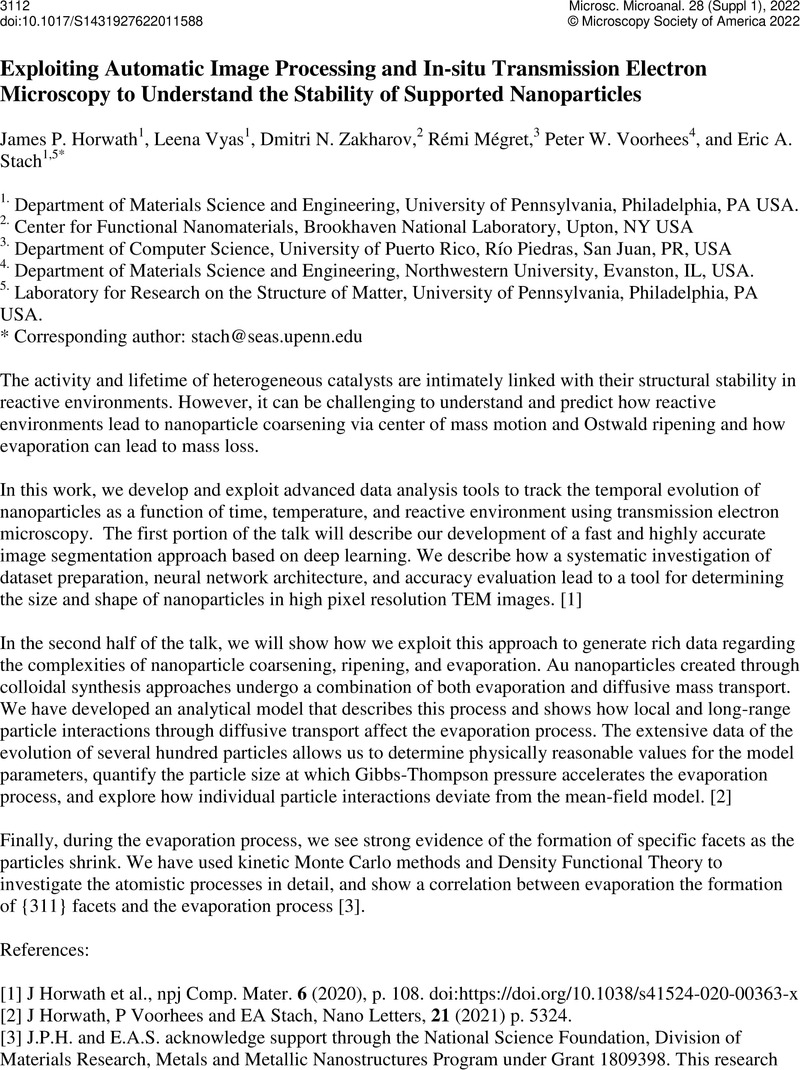No CrossRef data available.
Article contents
Exploiting Automatic Image Processing and In-situ Transmission Electron Microscopy to Understand the Stability of Supported Nanoparticles
Published online by Cambridge University Press: 22 July 2022
Abstract
An abstract is not available for this content so a preview has been provided. As you have access to this content, a full PDF is available via the ‘Save PDF’ action button.

- Type
- Artificial Intelligence, Instrument Automation, And High-dimensional Data Analytics for Microscopy and Microanalysis
- Information
- Copyright
- Copyright © Microscopy Society of America 2022
References
Horwath, J et al. , npj Comp. Mater. 6 (2020), p. 108. doi:https://doi.org/10.1038/s41524-020-00363-xCrossRefGoogle Scholar
J.P.H. and E.A.S. acknowledge support through the National Science Foundation, Division of Materials Research, Metals and Metallic Nanostructures Program under Grant 1809398. This research used resources of the Center for Functional Nanomaterials, which is a U.S. DOE Office of Science Facility, at Brookhaven National Laboratory under Contract No. DE-SC00127044. P.W.V. acknowledges financial assistance under award 70NANB19H005 from U.S. Department of Commerce, National Institute of Standards and Technology as part of the Center for Hierarchical Materials Design. The authors would like to thank Kim Kisslinger at the Center for Functional Nanomaterials, Brookhaven National Laboratory for assistance with data collection, and Katherine Elbert and Christopher Murray from the Department of Chemistry, University of Pennsylvania for help with nanoparticle synthesis and self-assembly.Google Scholar



